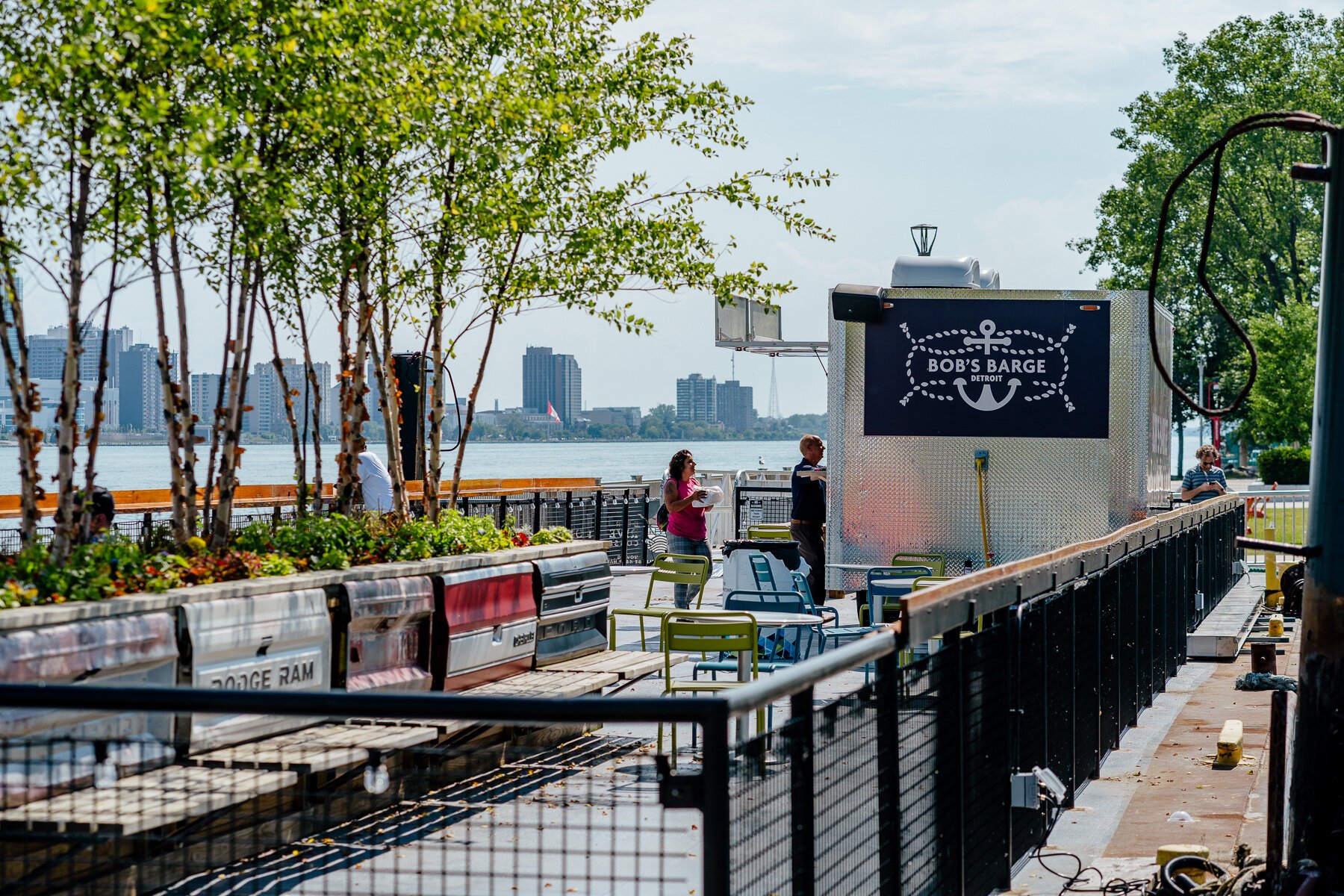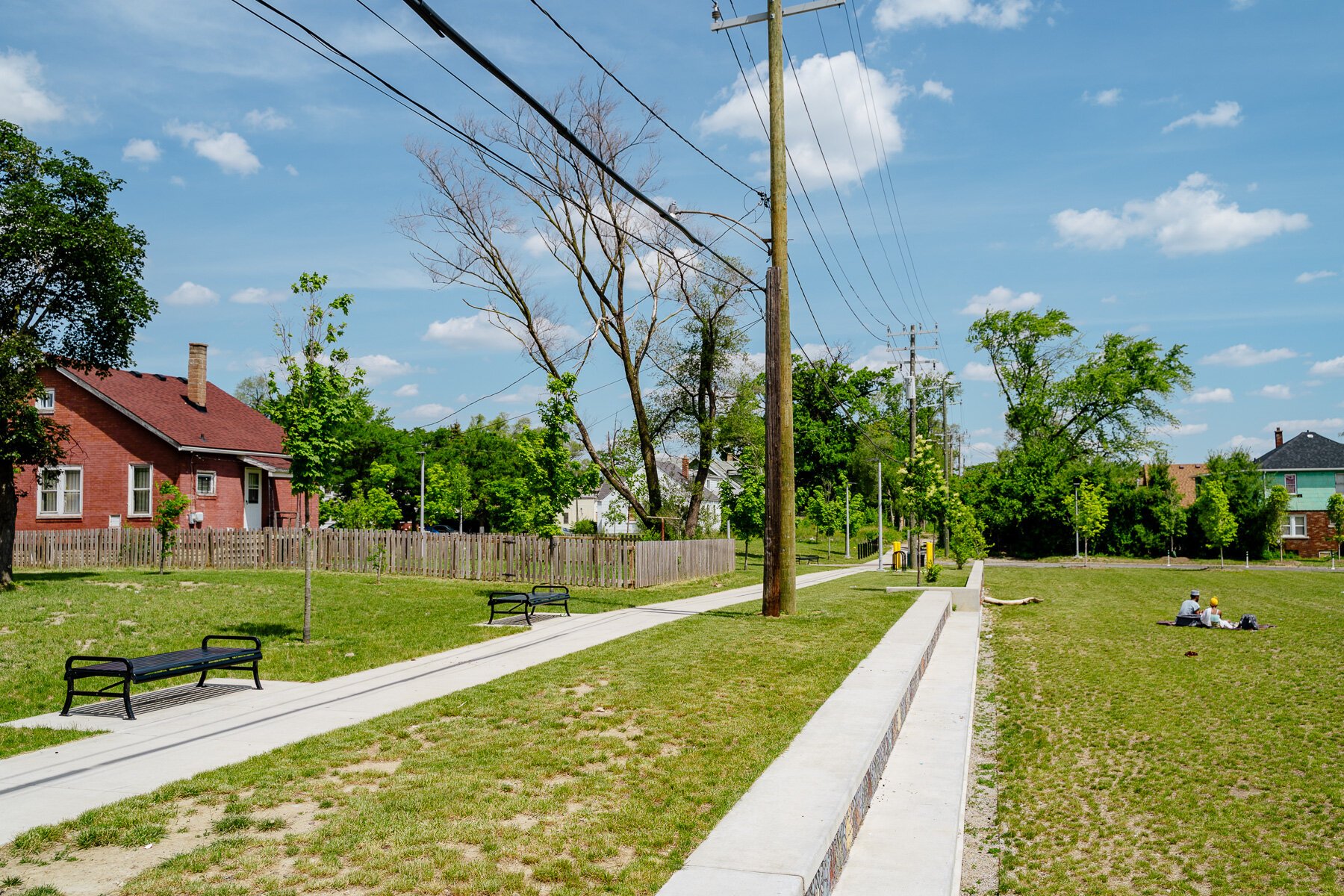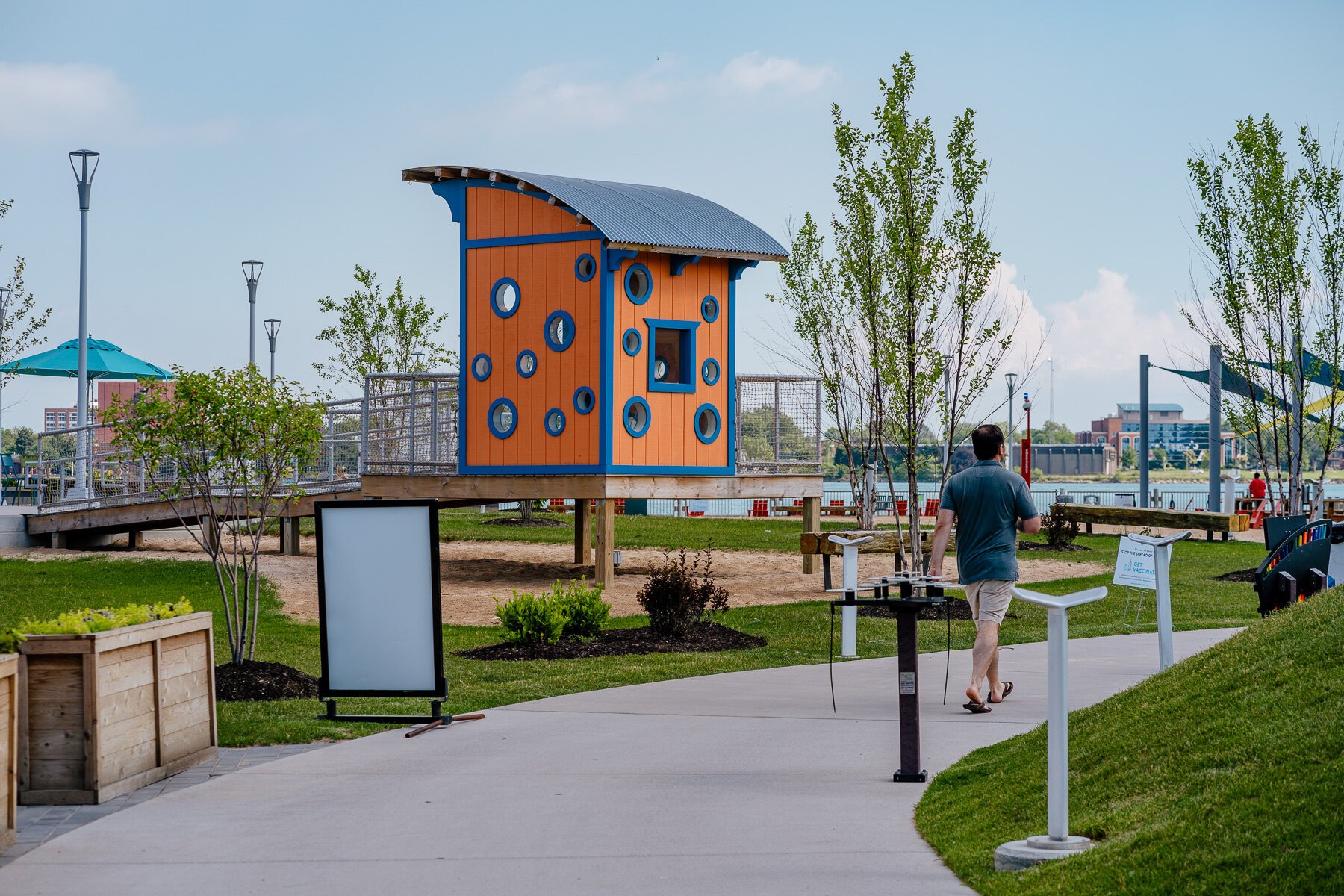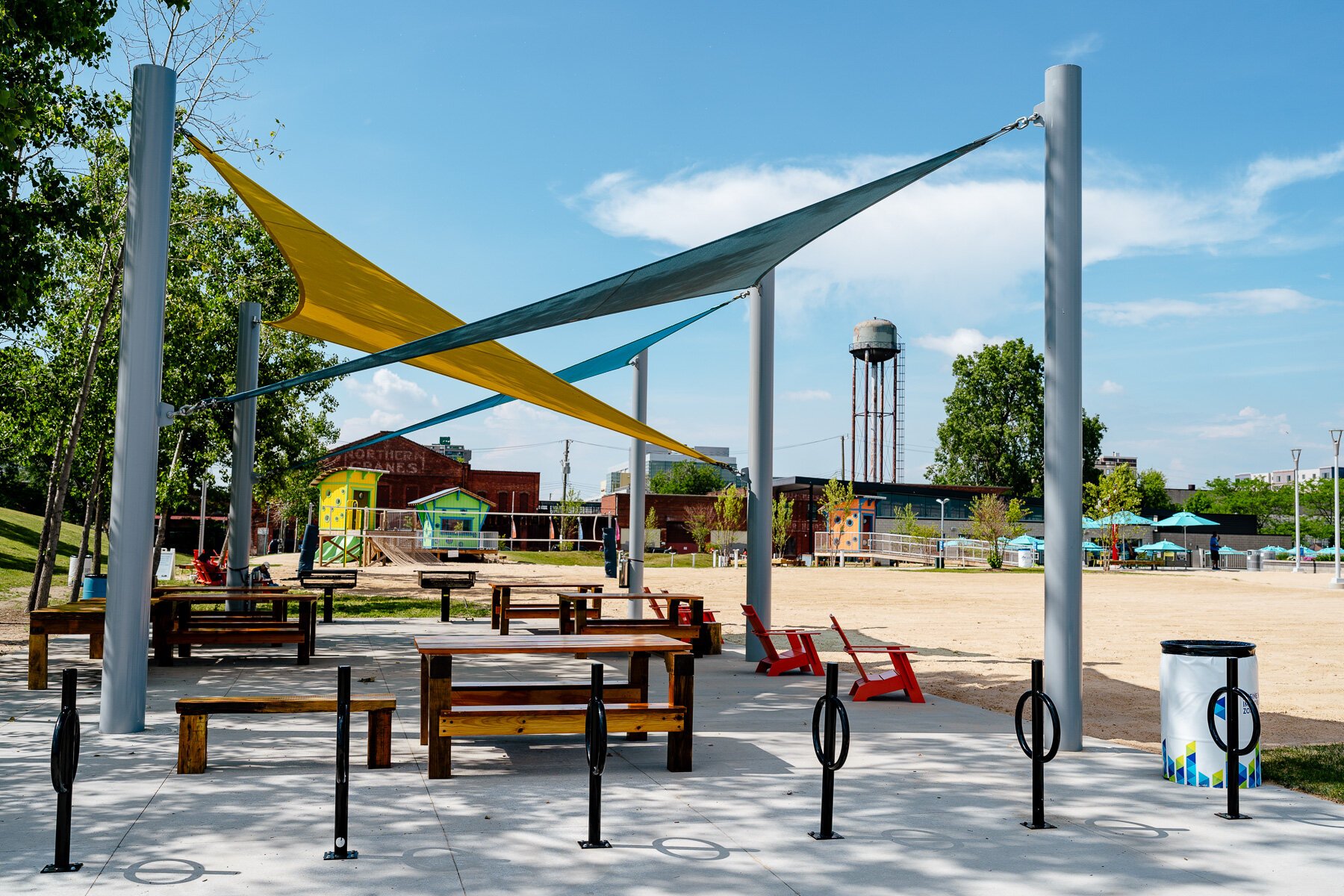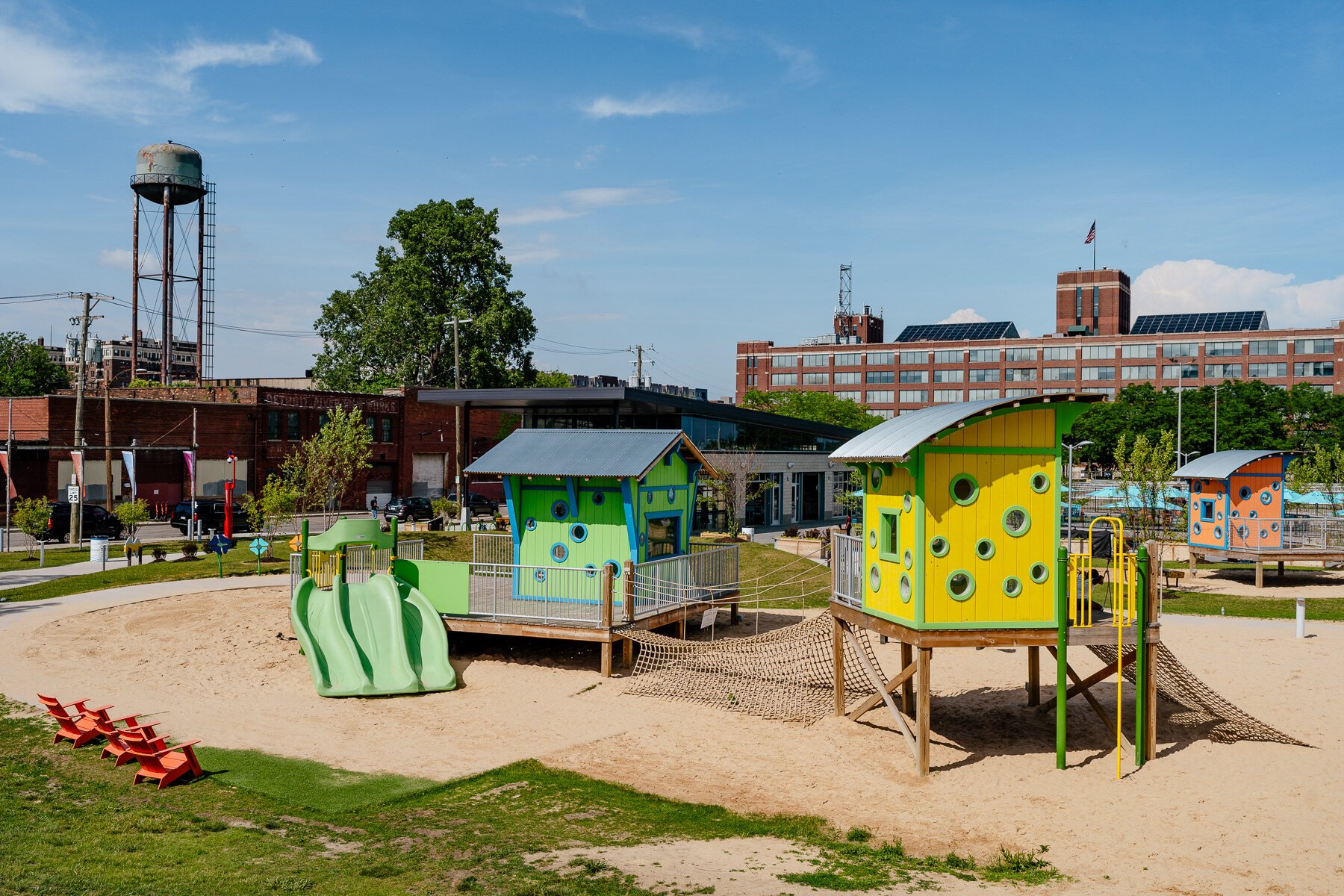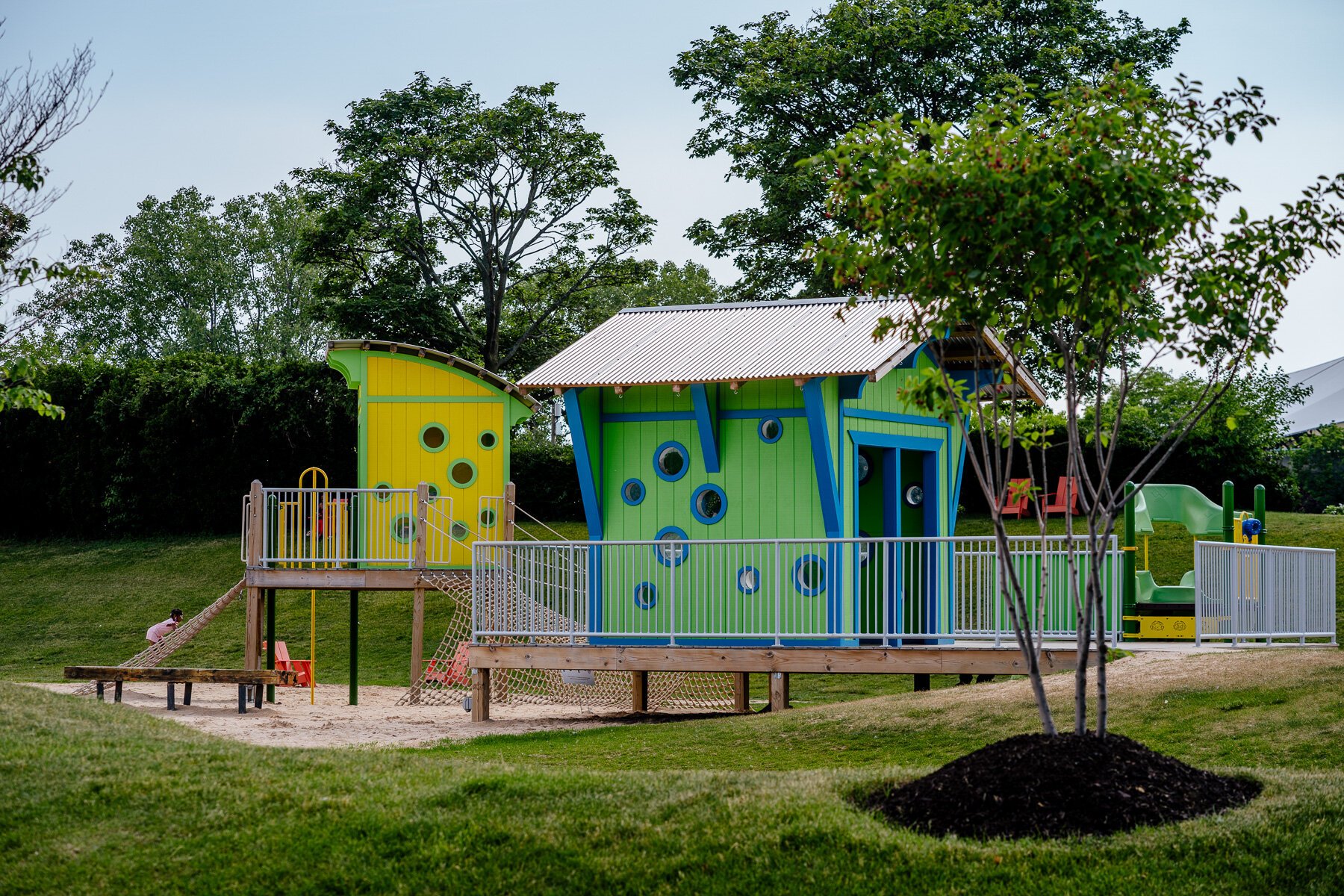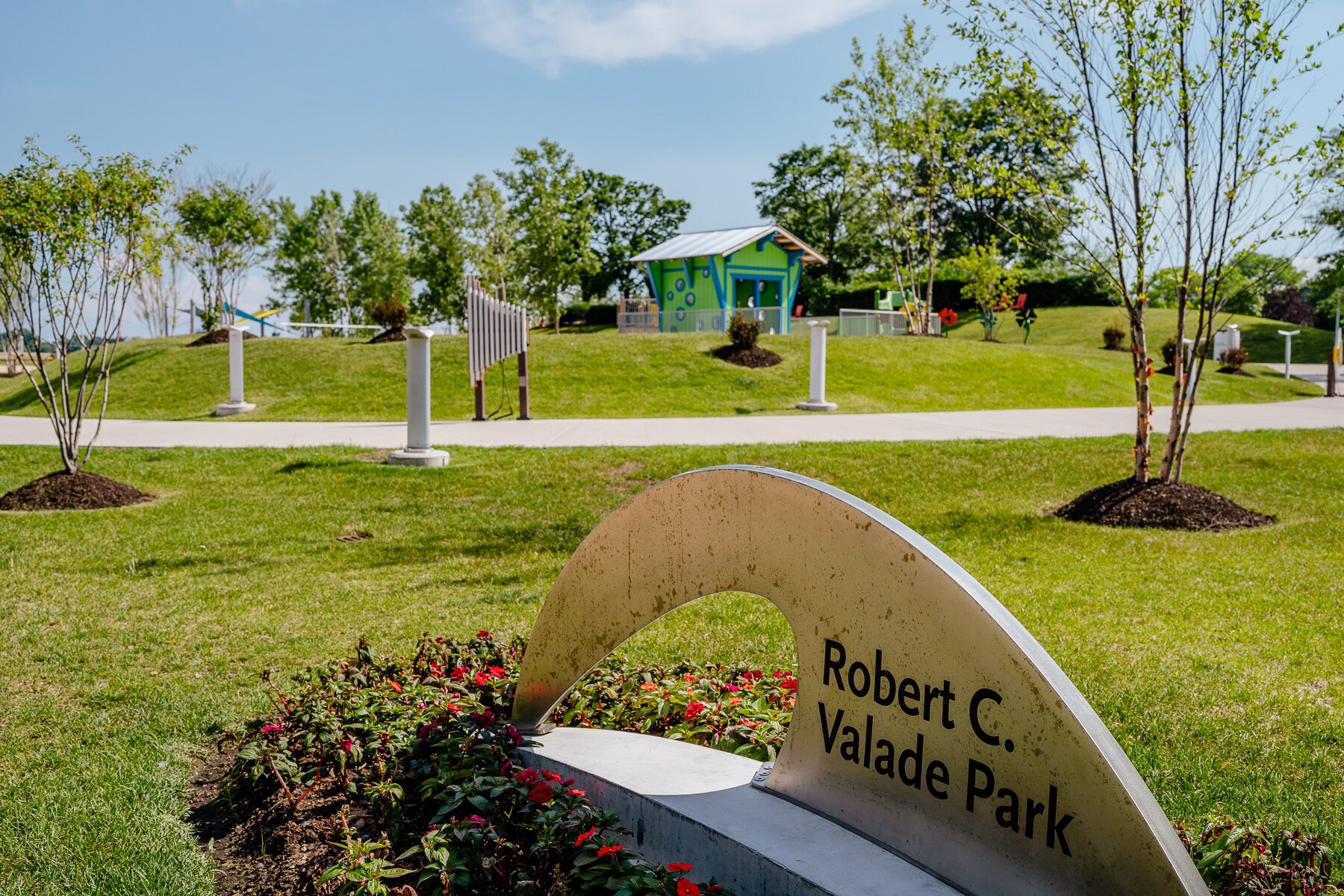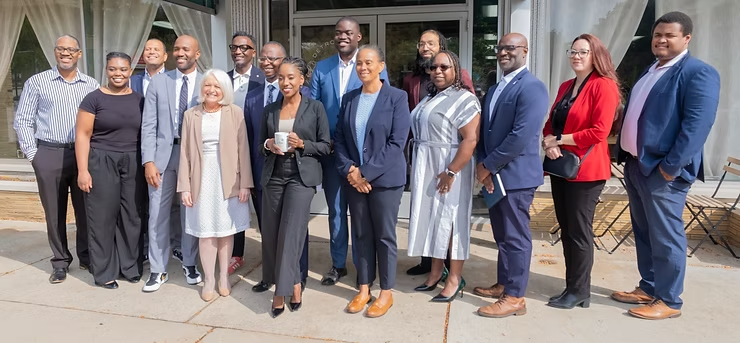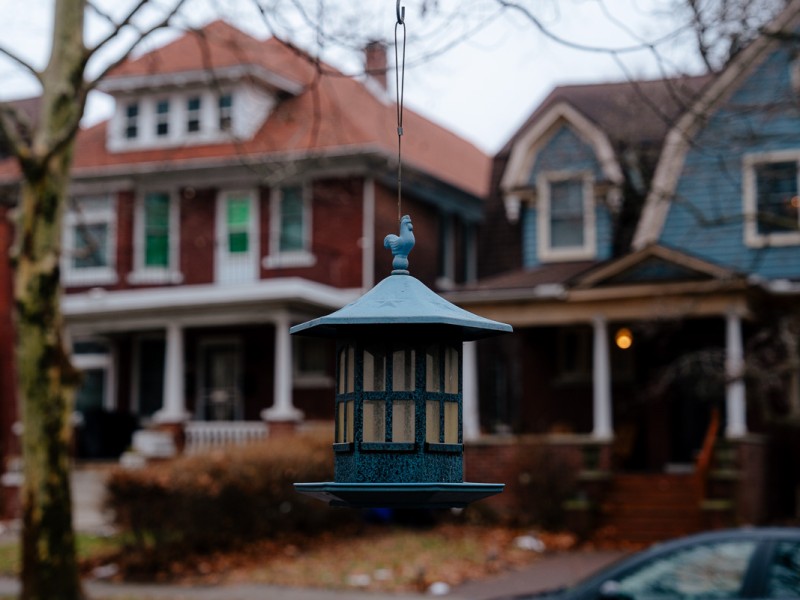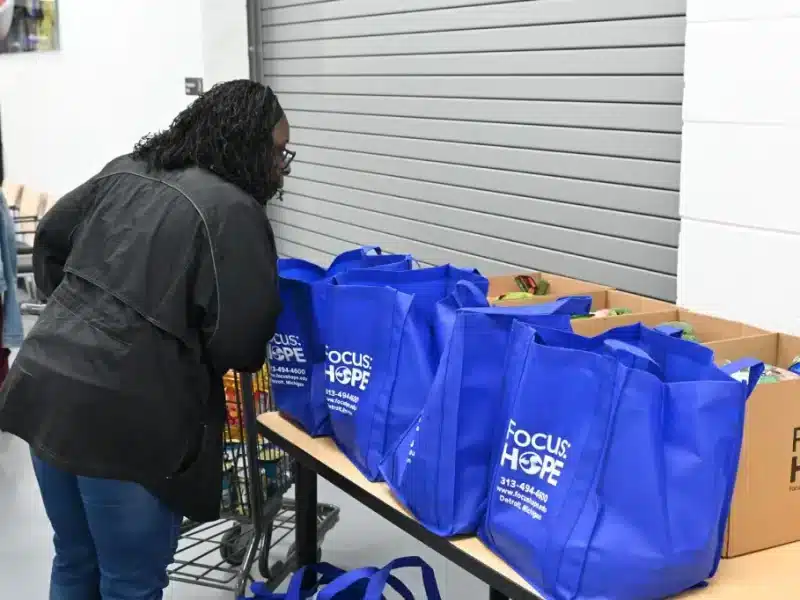How park designers are building equity in Detroit’s public spaces
"You need to be intentional and you have to make that extra effort. … You can't just present a plan and say 'This is what we're going to be doing to your community.'"
Since Stephanie Harbin moved to Detroit’s Fitzgerald neighborhood in 1969, she says her once-“vibrant” community has been slowly marred by disinvestment, abandonment, and blight, with the number of houses on her block alone shrinking from 75 to 45.
But things have begun to change for the better since Ella Fitzgerald Park opened in 2018, transforming 26 vacant lots in the heart of Fitzgerald into a community gathering place and point of pride.
“The park has really given [the neighborhood] a facelift,” Harbin says. “It has really given us a sense of hope now.”

However, the park didn’t just become a beloved community asset overnight – and a new report from the Knight Foundation and Gehl Architects examines the keys to its success. The report, titled “Adaptive Public Space: Places for People in the Pandemic and Beyond,” examines seven Knight-funded public spaces across the country, including two in Detroit: Ella Fitzgerald Park and the Detroit Riverfront. The study focuses heavily on how site planners have engaged community members in shaping the public spaces, and how the spaces have in turn impacted the surrounding communities.
Eamon O’Connor, a project manager at Gehl and coauthor of the study, says the most successful sites in Detroit and elsewhere were those that “made sure there was an ongoing hum” of community engagement “from concept all the way past the ribbon-cutting and into everyday operations.” Lilly Weinberg, senior director of community and national initiatives for the Knight Foundation, says that sort of engagement is “often missed because it’s really hard to do.”
“It doesn’t mean it’s impossible,” she says. “It just means that you need to be intentional and you have to make that extra effort. … You can’t just present a plan and say ‘This is what we’re going to be doing to your community.'”
“Co-creating” Ella Fitzgerald Park
The intentionality that Weinberg describes was indeed built into the plans for Ella Fitzgerald Park from the start. The project arose from Detroit Planning Director Maurice Cox’s Fitzgerald Revitalization Project, announced in 2017.
Alexa Bush, design director for the city’s east region, says the city’s planning department was aware of the fact that it “hadn’t been playing much of a strategic role in the neighborhoods for some time.” She says openness and transparency were critical in rebuilding trust with city residents.
“We thought it was just really essential to bring the community into that process,” Bush says. “We thought of it as a co-creating process, where we’re bringing some of the expertise we have in the planning department, but really wanting to learn from the residents.”
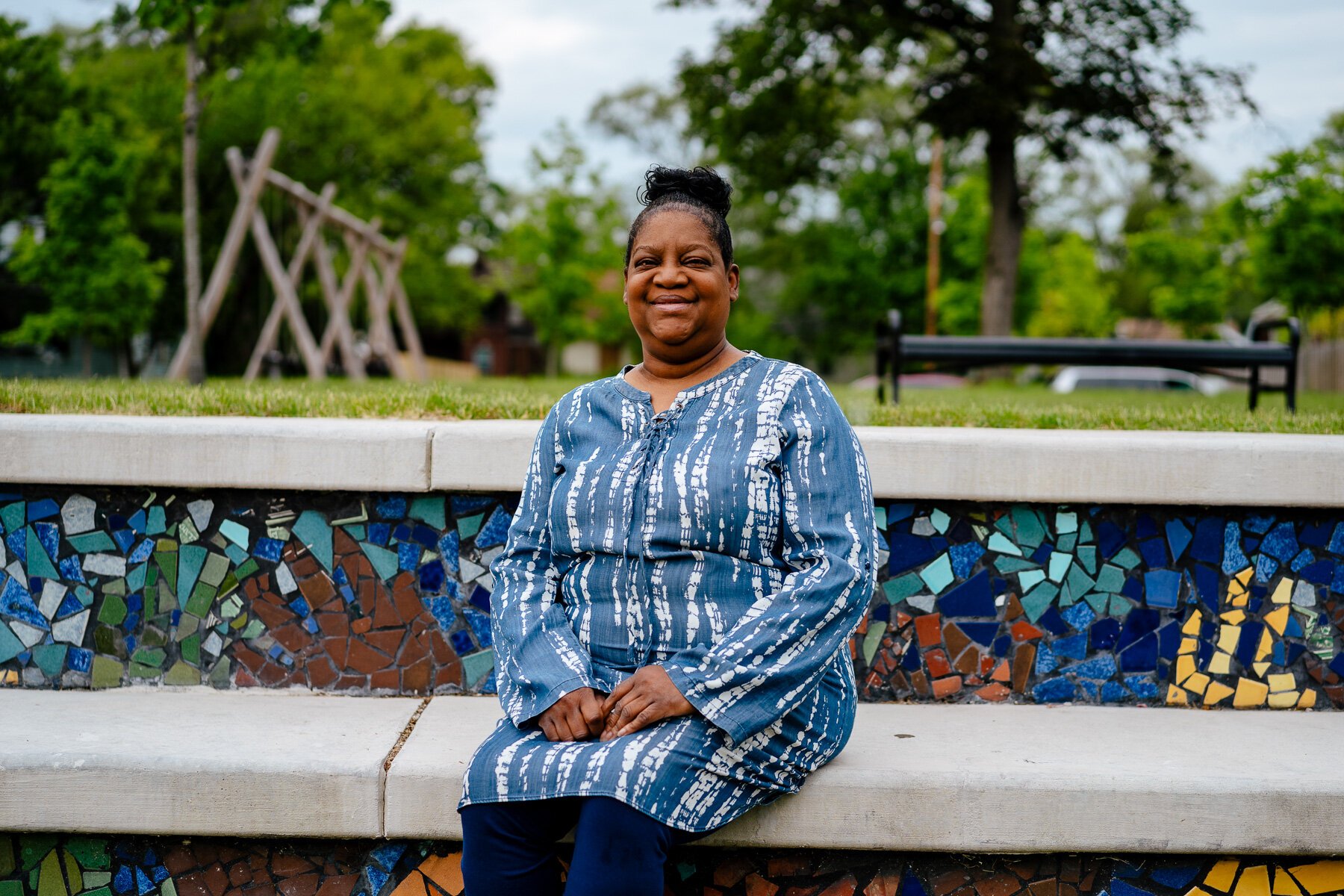
That process unfolded through a variety of unconventional methods. Planning staff held community meetings in the Fitzgerald neighborhood at Mary McLeod Bethune Elementary-Middle School. But they also engaged with residents and solicited feedback by hosting cookouts in vacant lots, offering pop-up bike repair clinics for neighborhood kids, and hosting an “Activity Day” featuring a variety of activities that could become regular programming in the future park.
“Their engagement process wasn’t just taking ideas on Post-Its,” O’Connor says. “It was actually providing material benefits.”
Harbin became involved in the process early through her role as president of the San Juan Block Club, but she says the city successfully engaged many neighborhood residents who might not have otherwise participated in planning the park.
“I felt that they cared,” Harbin says of the city’s planning team. “They were concerned and they wanted our input. They weren’t just coming in and saying, ‘Okay, we’re going to build this park and that’s that.’ They wanted us to participate.”
As a result, the community’s identity was baked into the park’s defining features. Residents suggested the park’s name, which came from a now-closed elementary school in the neighborhood that was itself named after a former Detroit Public Schools teacher. And artist Hubert Massey worked with residents to design the two colorful mosaic murals that adorn the park.
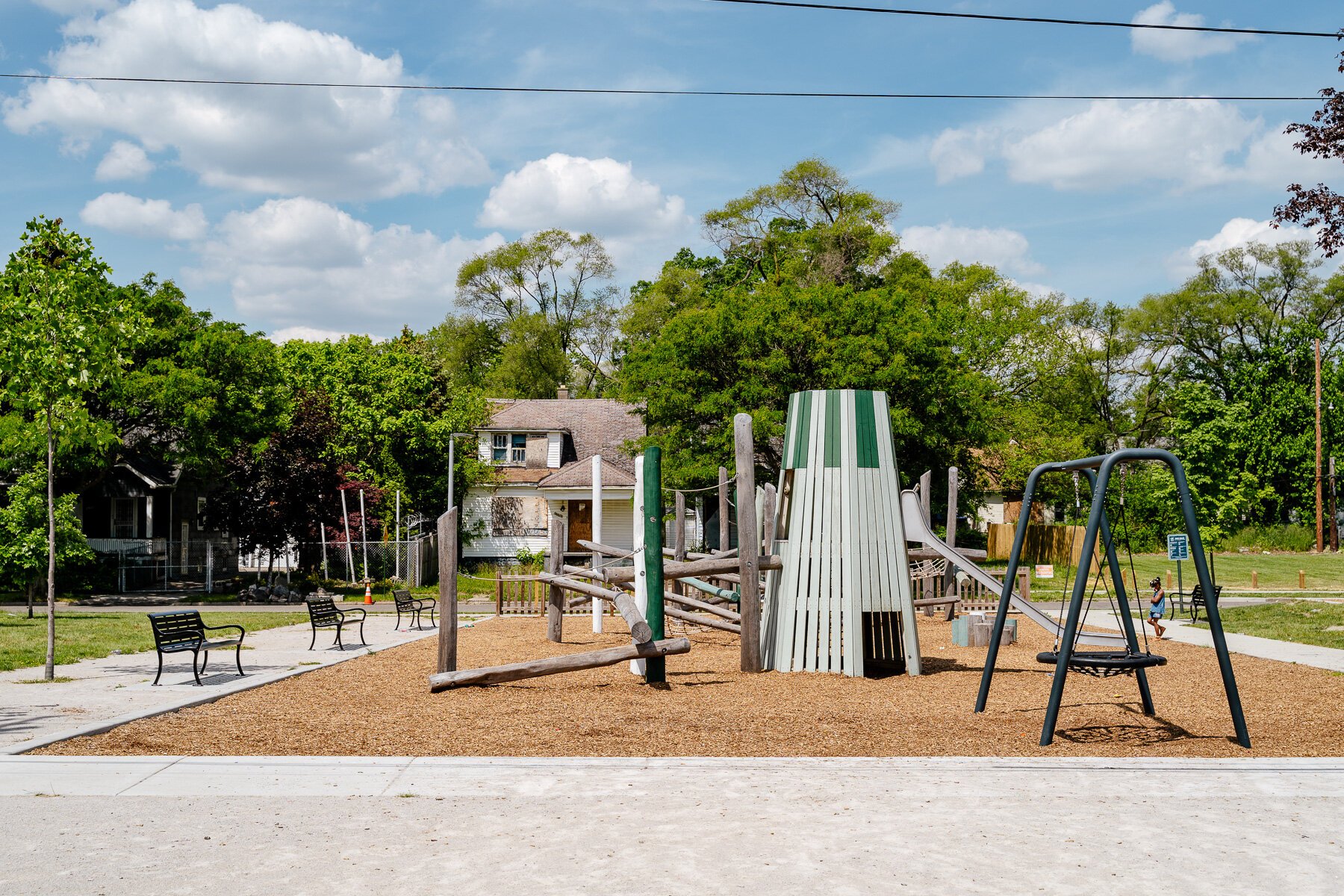
Community members were also employed in the park’s development through a unique partnership with The Greening of Detroit, which has hired 20 Fitzgerald residents to work in park cleanup and maintenance. Bush says many of those employees have been “huge champions” of the project, also getting involved in the effort off the clock.
“Neighborhood stabilization is bigger than just fixing the built environment,” Bush says. “It’s also providing economic security to people.”
Bush says city staff has a long-term commitment to the Fitzgerald neighborhood (through a housing rehab project, among other initiatives), and they’ve worked to cultivate a “community of advocates” who will be long-term users and stewards of the park as well.
That has manifested so far through regular gatherings at the park including weddings, graduations, and even a hula hooping group hosted by resident Bernadette King. Harbin says the city’s communication with neighborhood leaders “just hasn’t stopped.”
“After building the park, we’re still in communication with them about things that still need to continue,” she says.
Weinberg says she’s “blown away” by the city’s engagement with the Fitzgerald community throughout the park project.
“Personally, I think it’s a North Star for the country for how a really, really smart public space can be run,” she says.
Bringing residents to the Riverfront
Close engagement with community members has also been key for the other Detroit project featured in the Knight/Gehl study: the Detroit Riverfront. The study focuses specifically on the riverfront’s Dequindre Cut Freight Yard, which houses a beer and wine garden; and Valade Park, which includes a beach, Bob’s Barge Bar, and local restaurants.
But Mark Wallace, president and CEO of the Detroit Riverfront Conservancy, says “the idea of listening closely to the community has been part of our DNA since we started as an organization” in 2003, playing into the many projects the conservancy has undertaken along the riverfront.
Wallace says the conservancy hosted over 100 public input meetings before releasing its comprehensive East Riverfront Framework Plan in 2017, which laid out the plan for Valade Park among many other amenities.
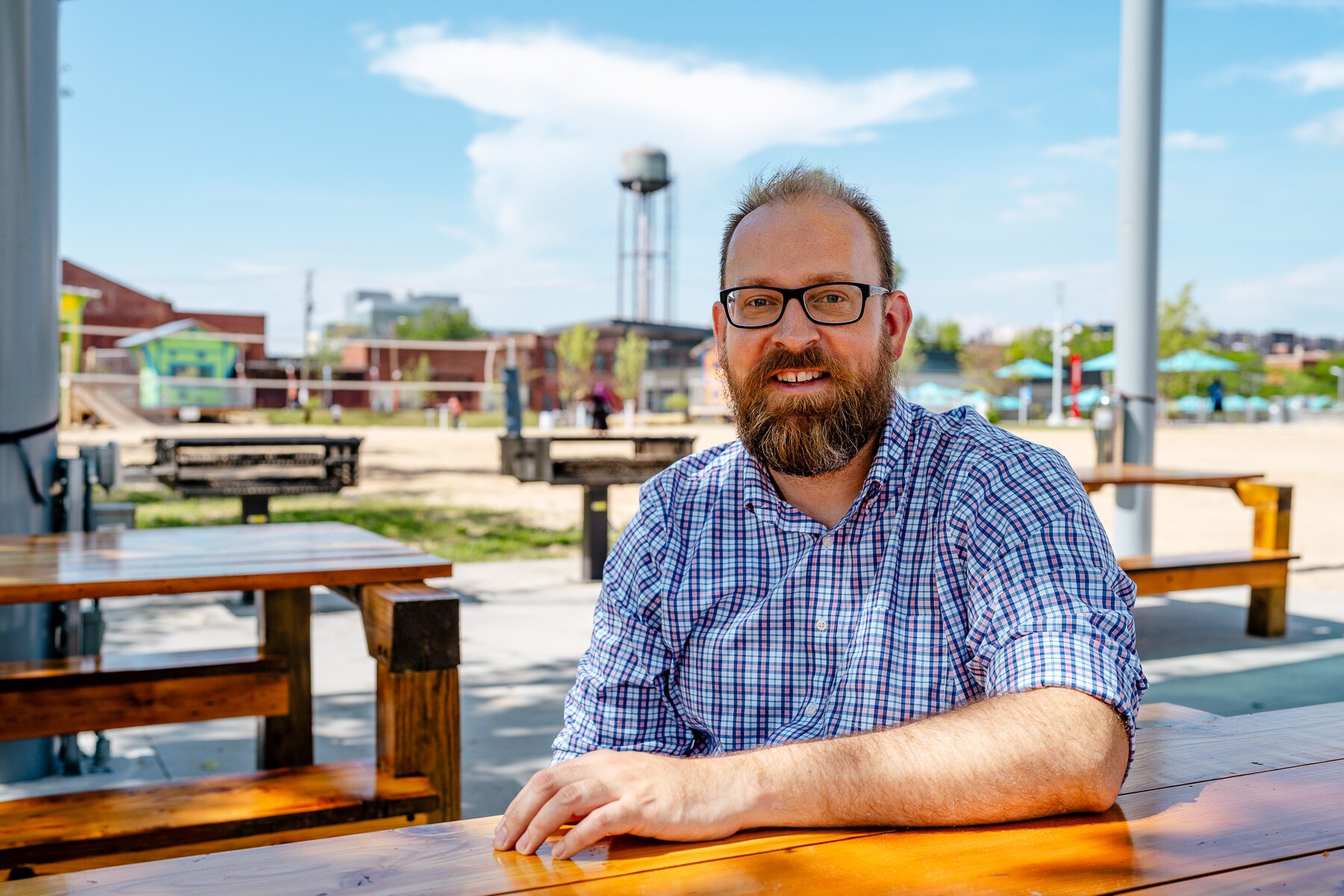
The conservancy has also created a Community Advisory Team, a group of 21 Detroiters whom Wallace says “have deep connections in their community, but are not necessarily community leaders.” The conservancy has taken that group to visit notable public spaces nationwide to gather ideas, and they’ve given feedback to the people designing projects along the riverfront.
“They’re not at all afraid to tell a world-renowned architect or landscape architect what they like or what they don’t like about the ideas that are being put on paper. And I love that about them,” Wallace says. “Our community comes together and they have a strong sense of how they’re going to use the space and I think it’s been really helpful for us.”
Diverse programming has been a priority for the Community Advisory Team, and one of the main strengths of the Riverfront’s approach to serving a broad range of city residents. The riverfront hosts activities ranging from charity walks and runs to yoga and tai chi classes to literacy programs.
The conservancy has in many cases reached out to the leaders of existing programs throughout the city and offered them the opportunity to bring their activities to the riverfront. Wallace describes the conservancy’s three-person programming staff as “one of the most efficient programming teams I’ve seen around the country because we lean so heavily on groups that existed already.”
The Knight/Gehl study found that city residents generally had a stronger connection to neighborhood parks (like Ella Fitzgerald Park) than citywide destinations (like the Detroit Riverfront). 70% of respondents said they agreed or strongly agreed that neighborhood parks were “special” to them, while 57% said the same about citywide destinations. O’Connor says that reflects a need for public space leaders to “do more” to engage their communities, particularly communities of color.
“Oftentimes these citywide destinations are located in downtowns that are not predominantly Black or predominantly people of color,” he says. “So that creates an outreach challenge, not to mention a physical connectivity challenge.”
Wallace is particularly aware of that physical connectivity challenge. He notes the Joseph Campau Greenway, which will connect the riverfront to East Vernor Highway and Detroit’s East Side neighborhoods, as one way to bridge that gap.
“It’s a physical invitation and a physical connection that says … the East Side still has this connection to get down to the water,” he says. “I think things like that are really important, both symbolically and also tangibly.”
COVID elevates public spaces’ importance
Although work on the Knight/Gehl study got underway before the COVID-19 pandemic hit, O’Connor says the pandemic “only elevated the urgency” of the report. Park usage surged nationwide during the pandemic as people sought safe ways to exercise, socialize, and otherwise get out of the house.
The Detroit sites spotlighted in the study were no exception. 58% of Fitzgerald-area residents surveyed by Gehl reported visiting Ella Fitzgerald Park as often or more frequently than they did before the pandemic, and the Detroit Riverwalk’s 2020 visitorship increased 20% over 2019. Weinberg says that proves the importance of public spaces as Detroit and the rest of America moves forward from the pandemic.
“We need to be treating them as an essential service in our communities,” she says. “It’s not just like a ‘nice-to-have.'”
Weinberg says “the question that keeps [her] up at night” is how Detroit and other communities can build upon past successes and “rise to the occasion” of using incoming federal funds from the American Rescue Plan Act to further bolster their public spaces.
“There’s a special moment in time right now where there are trillions, with a T, of dollars being released within our communities,” she says. “… I think that it’s an exciting time. It’s possibly a once-in-a-lifetime opportunity. And we really hope that the dollars are used for great, community-led public spaces that all can enjoy.”
